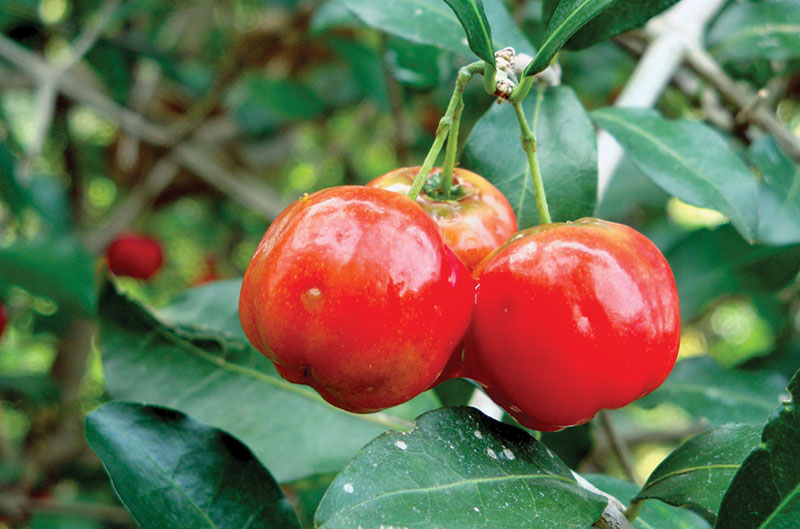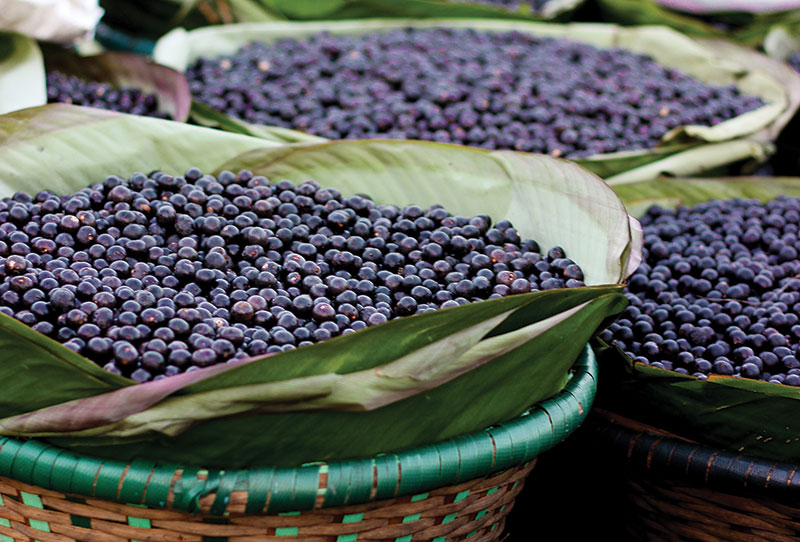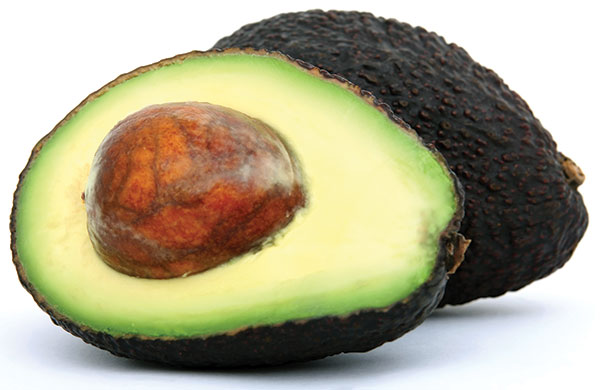Superfruits offer personal care product brands lots of marketing muscle, delivering an image of exoticism, as well as offering real functional benefits. As a result, beauty companies have been trawling the world for superfruits to give them a competitive edge.
The past three years have seen a five-fold increase in global beauty launches containing superfoods and fruits, according to market researcher Mintel, whose analysts predict the trend will continue as the industry capitalises on the health benefits these ingredients offer.
Mintel’s Global New Products Database has noted how superfruits and foods have been added in the past year into skin and hair care, soap, bath, shaving and depilatory products.
David Tyrrell, Global Skin Care Analyst at Mintel, says: “Natural actives from popular superfruits provide for specific consumers’ needs (eg, skin hydration, protection, anti-stress) to make skin look healthier.” He notes the popularity of avocados becoming the “go-to food staple over the last few years” as an example of a superfood crossing over into cosmetics thanks to marketing around its health and nutritional benefits.
“The healthy superfruit is making a strong move into skin care – and brands that leverage consumer enthusiasm for avocado’s natural, clean reputation will garner long-term interest across generations and regions,” he tells Cosmetics Business.
Philippe Daigle, Product Manager at IFF-Lucas Meyer, which owns Australia’s Southern Cross Botanicals, agrees consumers are attracted to the use of superfruits in personal care products, “believing if it’s good for you to eat, it must be good for your skin too”.
He explains that superfruits contain “a cocktail of active molecules, vitamins, polyphenols, flavonoids and minerals to help boost the skin system”, helping hydrate and rebuild it.
Southern Cross Botanicals, for example, offers Superox-C, an extract from the Australian kakadu plum: the world’s richest source of vitamin C. The company says it fights oxidative stress to reduce the appearance of wrinkles, improve skin radiance and boost luminosity.
Daigle says many superfruit active ingredients are used in local market focused products that do not always carry universal appeal.
Many superfruit active ingredients are used in local market focused products that do not always carry universal appeal
“Consumers can relate to products more easily if they have a local connection,” he tells Cosmetics Business. “Even though everything is globalised, many people prefer to buy local ingredients.”
He notes that while such products originally targeted millennials “who look at the labels of everything they buy”, older generations are now looking for more natural ingredients “as they might be scared of chemicals”.
He believes the trend for preferring beauty products with natural ingredients will extend and superfruits will be in demand. However, he adds that brands need to be careful regarding sourcing, as consumers want to know whether ingredients are harvested sustainably, or even grown organically, “and if fruits have been grown in fields with pesticides, they might not be ‘super’ but in fact be considered toxic”.
This is made all the tougher by the array of fruits and sources that are now available. For instance, calamansi, a citrus fruit native to the Philippines, is gaining greater exposure in Asia, in particular South Korea, due to its high content of vitamin C, says Tyrrell.
“Vitamin C remains a star ingredient in anti-ageing and whitening/brightening skin care across the globe, and universal preference for natural/organic skin care ingredients can only quicken the introduction of calamansi across the category,” he tells Cosmetics Business.
Southern Cross Botanicals also uses Tazman Pepper, extracted from Tasmanian pepper fruits, for its anti-itching/burning relief properties and Lime Pearl finger lime fruit sourced from the Australian rainforest shrub Microcitrus australasica, a natural source of a-hydroxy-acids (AHAs), considered an excellent tool for exfoliation.
In 2017, cosmetic ingredients supplier Naturex launched its Energy Boost concept, a facial skin cream enriched with cornelian and acerola cherry extracts “to provide an antioxidant boost”; and ACG Cocktail, a spray made with acerola cherry, chakah honey and guarana “to give the skin a shot of energy”.
A company note said the cornelian cherry is used in traditional Chinese medicine and is “certain to become a highly successful beauty ingredient in the near future”. Meanwhile, the South American acerola cherry has been described as a “vitamin C superstar”.

Brazil: rich biodiversity
Brazil is writ large when it comes to superfruit harvesting. One of the most ethnically diverse places on the planet, Brazil’s beauty sector often looks to the country’s unique fruits, nuts and seeds for vitamins and minerals.
But it is also home to some of the world’s most prestigious biomes, such as the Amazon rainforest, offering a range of sought-after superfruits.
In a twist on cocoa and shea butters, cupuaçu – Amazonian superfruit and a cousin of cacao – is an increasingly popular option. Rich in fatty omega acids, antioxidant polyphenols, essential minerals such as selenium, plus vitamins A, B and C, but lighter than shea butter, cupuaçu can nourish dry, cracked skin and sun-damaged hair.
Its unique combination of nutrients helps reinforce skin elasticity and rejuvenate, reducing fine lines and wrinkles and protecting skin and hair from strong sunlight by absorbing UV rays.
Another superfruit in Brazilian skin care products is maracujá, or passion fruit, which hides a wealth of vitamin C in its yellow pulp. Its uses in skin care have yet to be extensively studied, but preliminary research published in the International Journal of Food Sciences and Nutrition suggests that maracujá seed oil, rich in linoleic acid, could play a vital role in skin function.
Meanwhile, vitamin C helps the skin manufacture collagen, while other vitamins, minerals and fatty acids imbue it with anti-inflammatory properties to help repair damage.

Perhaps the most famous of the Amazon’s superfruits, the açaí berry, is another potent fruit finding its way into cosmetic products. While açaí has become the darling of the food nutrition world in recent years, incorporated into smoothie bowls and protein powders, the berry’s vitamin C properties have also seen Brazilian beauty companies take advantage.
Companies such as organic producer Gran Oils Co use açaí oil extract in products such as shampoo, conditioner and essential oils for its anti-ageing and regenerative benefits.
In oil extract form the berry manages to retain the effectiveness of its antioxidants for much longer when exposed to light and air – while the effectiveness of other natural supplements can be weakened through heat or light exposure.
South Africa: local botanicals
There is a similar story in South Africa where the incorporation of superfruits centres on extracts from various indigenous botanicals.
George, Western Cape-based skin care brand Katavi South Africa credits sausage tree fruits, baobab tree fruits, marula nuts, mongongo nuts and moringa seeds as being Africa’s ‘big five’ cosmetic superfruits. Sausage tree, baobab, marula and moringa are all vitamin C rich.
The company has a range of all-natural skin care products targeting environmental stress on the skin with proprietary formulas harnessing antioxidant-rich extracts from superfruits.
The Katavi N/um Kigelia Booster Serum is formulated with sausage tree fruit (its botanical name is kigelia) to revitalise the skin and encourage a visibly smooth skin tone. It targets photoageing caused by UV radiation and environmental assaults including pollution, chemicals and wind.
Cape Town-based manufacturer Afriplex aims to unlock the potential of traditionally used African botanical remedies. The company currently produces more than 5 million packed products annually on behalf of its clients, and its vitamin C-rich range includes rosehip, buchu and sausage tree ingredients.
Fruits used in Indian cosmetics include mango, papaya, kiwi and ashwagandha
Retail portal faithful-to-nature.co.za is a comprehensive platform for locating cosmetic, health and beauty products based on vitamin C-enriched superfruits. Brands include South African companies Pure Beginnings, The Apothecary, The Victorian Garden, Aya, Oh-Lief, Earthsap, Africa Organics and BaoCare.
Pure Beginnings Soothing Baby Wash and Shampoo uses baobab extract to produce an all-in-one organic shampoo and cleanser; Africa Organics Kalahari Melon Body Lotion is a sweet, citrus-scented body lotion enriched with Kalahari melon, known for its anti-ageing characteristics; and BaoCare Baobab Oil is used in moisturising, anti-stretchmark, scar reduction and anti-ageing products.
India: citrus sources
In India, continuing demand for skin whitening creams makes superfruits appealing as ingredients.
“Vitamin C is a very good antioxidant that helps in lightening your skin colour,” Sushma Khan, founder of cosmetics advisor Makeup Factory by Sushma Khan, in New Delhi, tells Cosmetics Business. “So, many cosmetics companies are using ingredients that have vitamin C in them. In its Fair & Lovely Ayurvedic whitening cream, Hindustan Unilever claims to have added wild Himalayan cherry as an ingredient, alongside saffron, poppy seeds, manjistha [Rubia cordifolia] and several other herbs.”

Other Indian skin care products utilising superfruits include Forest Essentials’ Eternal Youth Formula, which contains fermented litchi juice and date extracts.
Furthermore, several major Ayurvedic brands, including Ayur Herbals and Khadi Natural, have shampoos including fruit ingredients, such as amla (Indian gooseberry) and shikakai (Acacia concinna). New Delhi-based Biotique markets Green Apple Shampoo and Conditioner, containing apple juice; and Bangalore-based Himalaya Herbals makes Blackhead Clearing Walnut Scrub, incorporating walnut granules.
As cosmetics companies are moving towards tapping a growing demand in India for organic products, they are using more concentrates of lemons, oranges and Indian gooseberry as ingredients, says Khan. Such products can also appeal to traditional knowledge of the benefits of superfruits for skin care, long understood in Indian households, with homemade recipes in regular use today, she says: “Dried peels of lemon or orange are ground and mixed with gram flour by women to be used as face scrub.”
Their vitamin C is especially beneficial for sweaty Indian summers, as it removes greasy debris and oil from the skin, cleansing it from blackheads and whiteheads, says Khan. Some salons also use dry peel products and pineapple pulp as a face pack after adding sandalwood powder and aloe vera gel, she notes.
Indeed, Shahnaz Husain, owner of herbal cosmetics brand the Shahnaz Husain Group in New Delhi, tells Cosmetics Business: “In our salons, we give fruit facials, in which fruit masks are applied after facial massage or facial treatments.” The advantage of these is that most fruits suit all skin types, even sensitive skins, she says.
Furthermore, lemon is combined with aloe vera to make the Shahnaz Husain brand’s Shacleanse Plus Hydrating Cleanser, for normal to dry skin. “It has also been combined with turmeric to formulate an effective skin softening body care cream,” she says.
Other fruits used in Indian cosmetics include mango, papaya, kiwi and ashwagandha (winter cherry), as well as dry fruits such as almonds, walnuts and figs, adds Husain. “Bael [Indian quince] is a common ingredient in Ayurvedic formulations for hair problems,” she says.
In India, as in the rest of the world, superfruits deliver real added value to cosmetics – and no doubt brands will continue to research ecosystems to find that special natural ingredient that gives them an edge.

